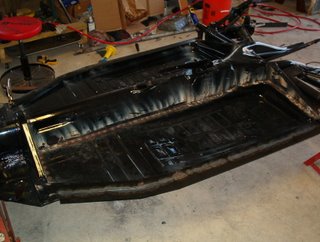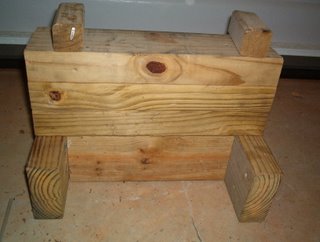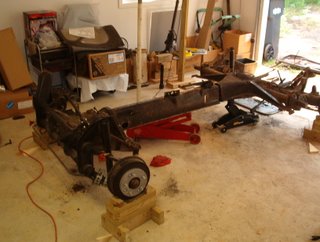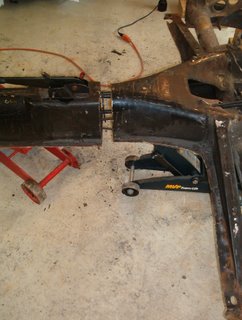Slow going.
After welding the floors in place I added another coat of POR-15 to the entire pan. When I finished the second coat, I top coated the underside with Herculiner, a brush on bed liner that is available at your local auto parts stores. I found, when applying the liner, that blotting with the brush is more effective than brushing it on. It seems to go on more evenly that way. I haven't actually tried rolling the stuff on yet. I will get to that when I apply it to the underside and inner tub of my body.
I flipped the pan over one last time and started working on all the suspension components. I broke down the front beam, replaced all the bushings and filled it with fresh grease. I also had my mechanic machine my drums while I was getting an oil change for my other car. One drum needed to be replaced and I picked it up from NAPA on the way home. I reused the old shocks because they weren't that old and probably are better being a little worn on the lighter car anyway. I replaced the short tie rod because I destroyed the ends when I was breaking down the beam. An inspection of the ball joints showed that they were still good. Cleaning and painting all this stuff was a disaster of a mess. I had grease and rust all over the place. Reassembly of the front beam wasn't too hard. Just the reverse of taking it apart. I replaced all the nylock nuts on the front and many of the bolts as well. Another thing I've learned in my travels is to never re-use lock nuts or lock washers unless it's an emergency. Once you use them the first time they lose some of their locking ability. The reason you want lock nuts and washers on in the first place is so they won't back off. And they're usually used on critical parts so don't cheap out. Get yourself a fifty count bag of each of the most common types (M8 M10 M12) so you'll have plenty on hand.

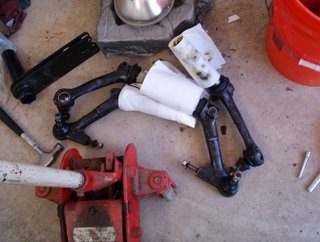
When I finished the front beam, I turned my attention to the rear suspension. When my car was still a bug the rear sat a little low and my camber was off. I decided to try the procedure here to correct the problem. I had to break down the trailing arms in order to replace the bushings anyway and I also needed to replace the torsion bushings a well. This project was a bear because I did it on my own. The biggest problem I had was that the pan was so light that, when I would jack the spring plates up, the front end of the car would come off the jack stands. I spent the better part of a day trying to weigh down the front of the car so I could get the job done. I ended up using my wife as the weight up front and it still came off the stands a little bit (She's not heavy). I eventually got the job done and putting the spring plate covers back on was a bear as well. I replaced the bolts here with stainless so I can keep them nice and shiny in the future (since they will always be visible). The problem I ran into was that the heads of the bolts I bought were a little larger than the originals. I couldn't get a socket on them and had to turn them with an open end wrench one tiny bit at a time. I'm gonna hate myself If I ever have to break these things down again.
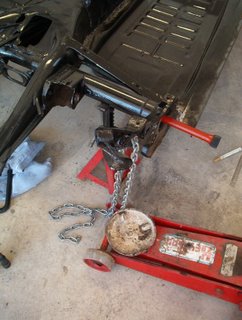
After I finished with the spring plates, I reinstalled the trailing arms and went to work on the rear stub axles and brakes. I had a bunch of problems here. First off, I had taken the axles apart long ago and completely forgot which bushing goes where when I put it back together with new bearings. There was no complete break down of the rear axles in any of my books. There are for swing axle cars but not for IRS. Thanks to message boards and and exploded view I managed to print, I figured it out. The second problem I ran into was something I didn't realize until I had the rear breaks almost completely reassembled. I put the backing plates on the wrong sides of the car. Only when I went to hook up the parking brake did I finally realize my mistake. I also cheaped out and tried to reuse my brake cylinders at the wheels. I knew better but they were clean and seemed to be working fine. I found out, while I was bleeding the brakes what a mistake this was. I ended up with two of the old cylinders leaking. So I had to tear them down, yet again, to replace what already should've been replaced anyway. "Going is optional, but stopping is absolutely imperative." This has always been one of my favorite car sayings. I should listen to myself more often.








